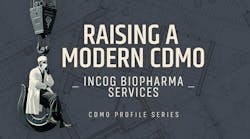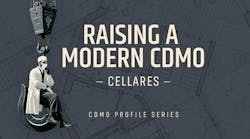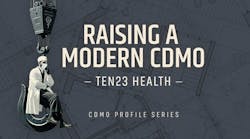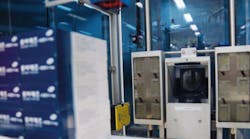Earlier this year, DSM Pharmaceutical Products (Parsippany, N.J.) received a Profiles in Sustainability award from United Business Media and ICIS Chemical Business, based upon its use of microreactor technology to intensify processes and its “green chemistry toolbox” to make production more sustainable and cost-effective.
We directed questions about these efforts to four of DSM’s green leaders: David Ager, PhD, Principal Scientist; Peter Poechlauer, PhD, Principal Scientist; Oliver May, PhD, Corporate Scientist; and Ronald Gebhard, PhD, Director, DSM Innovative Synthesis BV.
PhM: To what extent do DSM’s “green chemistry toolbox”, and its sustainable mission in general, provide a strategic advantage over competitors?
DSM: The sustainable mission of DSM has many positive consequences that result in a competitive advantage. The use of a renewable feedstock can quickly pay off, as more traditional sources become scarce and raw material prices increase. A reduction in waste decreases waste treatment and disposal costs. The use of a more efficient process not only reduces waste but can also increase throughput and provide a lower cost product.
PhM: Is it easier for a contract manufacturer to “go green” than it might have been even a year or two ago?
DSM: Science is always moving forward and the toolbox continues to expand. So, yes, it is easier to be greener now, as more tools and understanding is available.
PhM: What specific successes have you had in greening your bioprocesses? Is this just scratching the surface of what’s possible?
DSM: DSM has had a number of successes with bioprocesses through replacement of chemical processes or use of a renewable resource. Specific examples are a bioprocess for the manufacture of succinic acid from renewable rather than petrochemical feedstock. An enzymatic method for the product of antibiotics has replaced a chemical sequence that used environmentally unfriendly reagents and solvents. Many of our processes to vitamins and pharmaceuticals involve biotransformations, fermentations and catalytic methods.
PhM: What about catalysis? Can you provide details of some of your improvements?
DSM: We continue to move towards catalytic processes both with chemo- and biocatalysts. The use of a catalyst alleviates the use of a stoichiometric reagent. This can have cost benefits through the need to buy less catalyst than the reagent. In addition, waste handling and disposal can be easier and cheaper. Even with transition metal catalysts, cost benefits can be seen, as the methods to recycle the metals are well established. For biocatalysts, enzymes can now be overproduced making them readily available. An example is PharmaPLE—pig liver esterase that can be used in pharmaceutical applications as it is produced by microorganisms rather than a pig.
PhM: What have been the hardest challenges in implementing microreactor technology, and have your advances in this area been driven by client mandates?
DSM: Every project is different and has not really been driven by client mandates. The safety factor has played a large role in the implementation of microreactor technology. In addition, the ability to control reactions in a more precise manner can lead to significant cost savings, as by-product formation can be reduced and isolation becomes simpler. Once the technology had been accepted in the plant, there have been few challenges, other than the usual technical ones. In fact, many customers want to use microreactor technology when it is not necessary.
PhM: Have you used your metrics to compare microreactor-based processes with more traditional processes, and can you share some of this data (related to cycle time, material usage, cost savings, etc.)?
DSM: As with any other case where more than one option exists, microreactor technology is compared on an overall basis to the alternative(s). Quality, cost, environmental impact, safety and cycle time are all considered and the best option chosen to meet the customers’ requirements. The type of project determines which of the variables are most important, although safety and environmental considerations cannot be compromised.
For an early stage drug candidate, time is usually the overriding factor and, on a relative basis, little waste is generated even with an inefficient process. For an antibiotic or vitamin produced at large scale, then cost and quality become the key drivers, which have impact on the environmental and waste components.
PhM: What other sustainability-related metrics do you have for your processes? Can you share some of the more interesting data from these metrics?
DSM: The metrics employed are energy consumption, resource consumption, area usage, emissions, toxicity potential, and risk potential. The 12 principles of green chemistry provide other metrics that result in cost reductions, such as solvent choice and process mass intensity. The use of a single solvent in a process allows for “telescoping”. Solvent recovery is also simplified.
PhM: Is there a regulatory aspect to your green commitment? That is, does sustainable production facilitate your interaction with FDA, OSHA, and other authorities worldwide?
DSM: Although the majority of our production facilities are outside of the USA, the regulatory authorities respond in a similar fashion. The reduction in waste, “cleaner” and safer reagents, which reduce worker health concerns, are all seen in a positive light. We always work closely with the FDA and this has allowed us to use microreactors under cGMP.
PhM: What do you do in situations where a client brings a process to you that is clearly not aligned with your sustainable mission, or could be aligned better?
DSM: We would not run an unsafe process. For larger-scale production, “green” approaches will be cheaper than one that uses obnoxious reagents or produces large amounts of waste. Some of the discussions have revolved around solvent choice and usage, process mass intensity (or atom economy) and life cycle analysis (the process will not be feasible at large scale, for example, a starting material may not be available at the required volume.) As a consequence, it is usually a simple matter to convince the customer to go with a greener approach, as this will save money!





